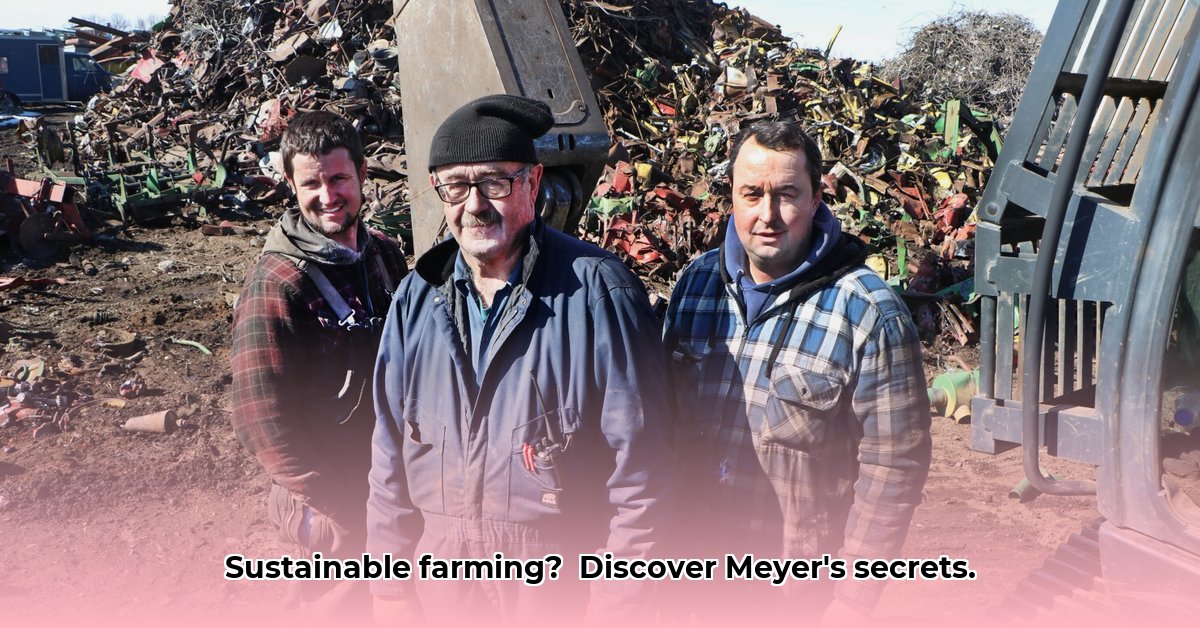
Meyers Tractor Salvage: A Case Study in Sustainable Agriculture
Meyers Tractor Salvage, sprawling across over 100 acres, presents a unique opportunity within the sustainable agriculture landscape. This case study analyzes its business model, environmental impact, and stakeholder implications to determine its contribution to sustainable farming practices. We aim to provide actionable insights for farmers, the company itself, and researchers seeking to optimize the use of salvaged farm equipment. For more on the history of farm equipment, see Case Tractor History.
Business Model Analysis: A Balancing Act of Savings and Risk
Meyers Tractor Salvage operates as a large-scale retailer of used and salvaged farm equipment. Its vast inventory offers a wide range of parts and machinery, potentially addressing the needs of budget-conscious farmers. However, inconsistent online reviews (averaging 2.3 out of 5 stars) highlight concerns regarding pricing transparency and customer service. The lack of upfront pricing on their website and inconsistent descriptions of equipment condition create uncertainty and a lack of trust for potential buyers. How can Meyers Tractor improve its online presence to build buyer confidence? Improved detailed descriptions, clear pricing, and high-quality images/videos of equipment are crucial.
Sustainability Assessment: Weighing the Environmental Pros and Cons
Meyers Tractor Salvage’s core business model inherently contributes to sustainability by extending the lifespan of existing farm equipment, reducing the demand for new manufacturing, and consequently lowering the environmental impact associated with production. This represents a significant positive impact. However, the use of older, potentially less energy-efficient machinery could offset these gains in part. Furthermore, the transportation of equipment contributes to greenhouse gas emissions, and the extent of scrap metal recycling is unclear. A comprehensive life-cycle assessment is needed to fully quantify Meyers' environmental footprint. This lack of data presents a significant research opportunity. What specific metrics should future research focus on to fully understand the environmental impact of Meyers Tractor Salvage?
Stakeholder Analysis: A Multifaceted Perspective
The success of Meyers Tractor Salvage depends on its impact on multiple stakeholders. The table below summarizes these impacts:
| Stakeholder | Positive Impacts | Negative Impacts |
|---|---|---|
| Farmers/Ag Businesses | Potential cost savings; access to unique, hard-to-find parts. | Risk of equipment malfunction; increased repair costs; uncertainty regarding equipment history. |
| Meyers Tractor Salvage | Revenue generation; reduced agricultural waste; potential for market leadership. | Reputation challenges; logistical complexities; difficulties in assessing equipment condition. |
| Environmental Organizations | Reduced manufacturing waste; potential for reduced emissions (with more efficient operation) | Increased emissions from transportation; uncertain recycling practices; potential for inefficient equipment use. |
| Researchers/Academics | Rich data source for environmental impact studies; opportunities for sustainable farming research | Challenges in collecting sufficient data; ethical considerations regarding data collection and analysis. |
Risk Assessment and Mitigation Strategies
Several key risks are associated with purchasing salvaged equipment from Meyers Tractor Salvage:
| Risk Factor | Risk Level | Mitigation Strategy |
|---|---|---|
| Equipment Condition | Medium to High | Independent pre-purchase inspection; negotiate a warranty; consider a mechanic’s assessment. |
| Parts Availability | Medium | Diversify sourcing; establish relationships with local mechanics and parts suppliers. |
| Equipment Efficiency | High | Prioritize newer, more efficient models; assess equipment's fuel consumption. |
| Transport Emissions | Medium | Prioritize regional sourcing; explore efficient transportation options. |
| Lack of Sustainability Data | High | Support research into the environmental impacts of salvaged equipment compared to new. |
Recommendations and Conclusion: A Path Towards Sustainable Success
To maximize its contribution to sustainable agriculture, Meyers Tractor Salvage should prioritize transparency. This includes providing detailed condition reports, high-quality images, and videos of equipment. Farmers should conduct thorough inspections and consider independent assessments before purchasing. Further research is crucial to quantify the environmental impacts of using salvaged equipment. This includes a comprehensive lifecycle assessment, focusing on quantifiable data on fuel efficiency, greenhouse gas emissions, and quantities of scrap metal recycled. Collaboration between Meyers Tractor, farmers, researchers, and environmental organizations is vital to advancing the sustainable use of salvaged farm equipment. The potential for salvaged equipment to contribute to environmentally friendly farming practices is substantial, but improved data collection, analysis, and transparent business practices are essential for realizing this potential.